Western Blotting
 |
Octoplus compact SPLWestern Blot & Gel Dok ImagerWenn Sie ein robustes Gerät suchen, mit dem Sie in hoher Sensitivität und großer Zuverlässigkeit Western Blots durchführen können, das sollte dieses Gerät bei Ihnen in engster Auswahl stehen.Homogene und knackige Fluoreszenz von blau (ca. 500nm) bis Infrarot (ca. 770nm), sensitive Chemilumineszenz-Detektion, zahlreiche weitere Konfigurationsmöglichkeiten. Ausgelegt für tägliche Nutzung inkl. Praktikum. Empfohlen für die SPL-Technologie.Zur Produktseite |
||
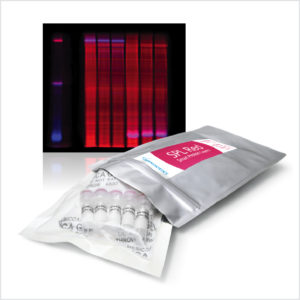 |
Smart Protein LayersKit zur Visualisierung des GesamtproteinsSmart Protein Layers (SPL) ist die patentierte, standard-basierte Technologie für die färbungsfreie, quantitative Analyse von Protein 1D-Gelen und Western Blots. SPL kombiniert dabei den schnellen und hochsensitiven Proteinnachweis mit einer neuen Qualität in punkto Normalisierung, Standardisierung und Quantifizierung.Zur Produktseite |
||
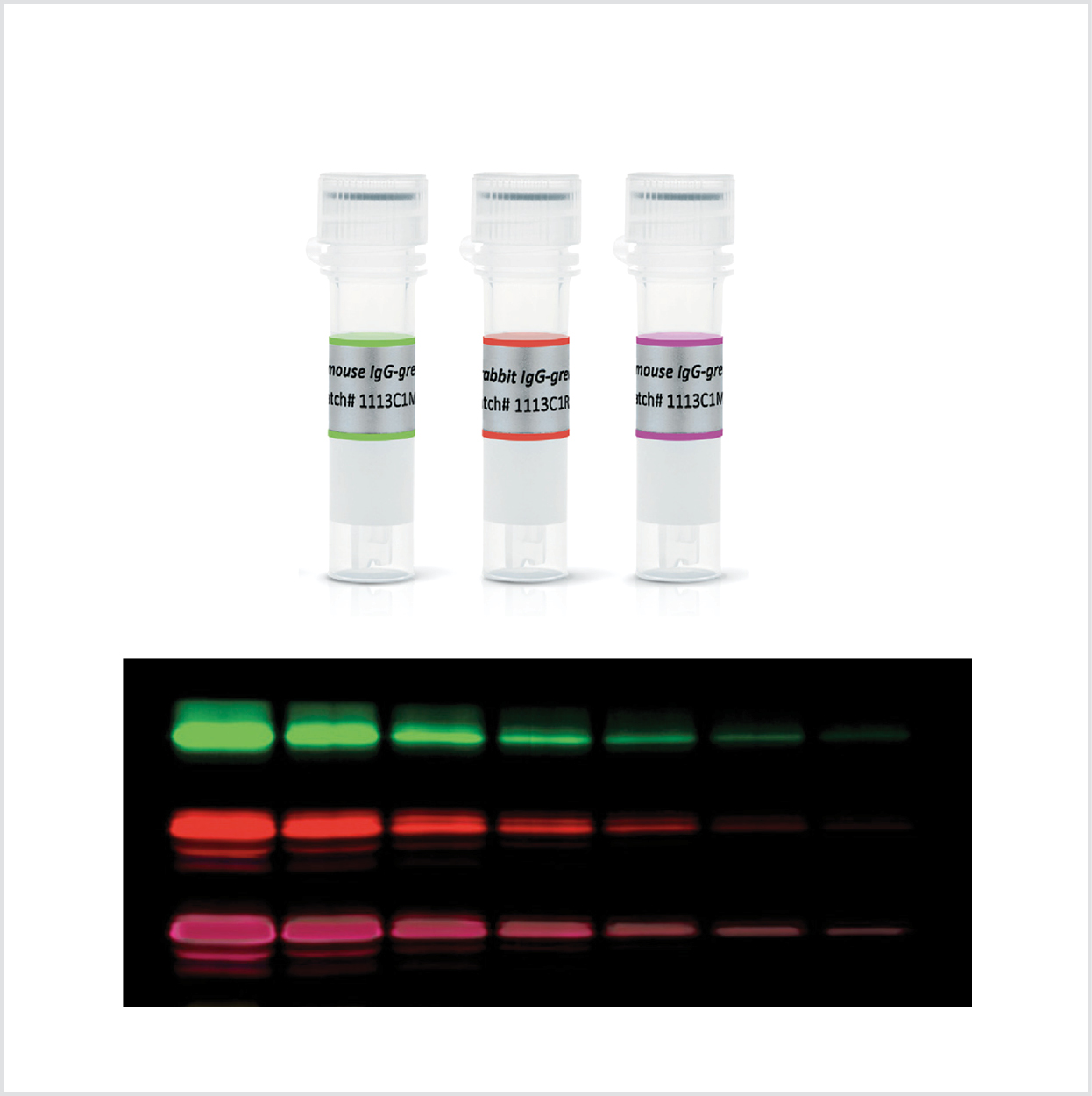 |
Fluoreszente Sekundär-AntikörperDetektion von TargetproteinenWenn Ihr im Blot nachzuweisendes Protein nicht knapp über dem Rauschen liegt (dann geht wirklich nur Chemilumineszenz), sollten fluoreszierende Antikörper die Nachweismethode der Wahl sein. Rote und infrarote Secondaries bieten grundsätzlich dabei die höchste Sensitivität (da das beste Signal-zu-Rausch-Verhalten). |
||
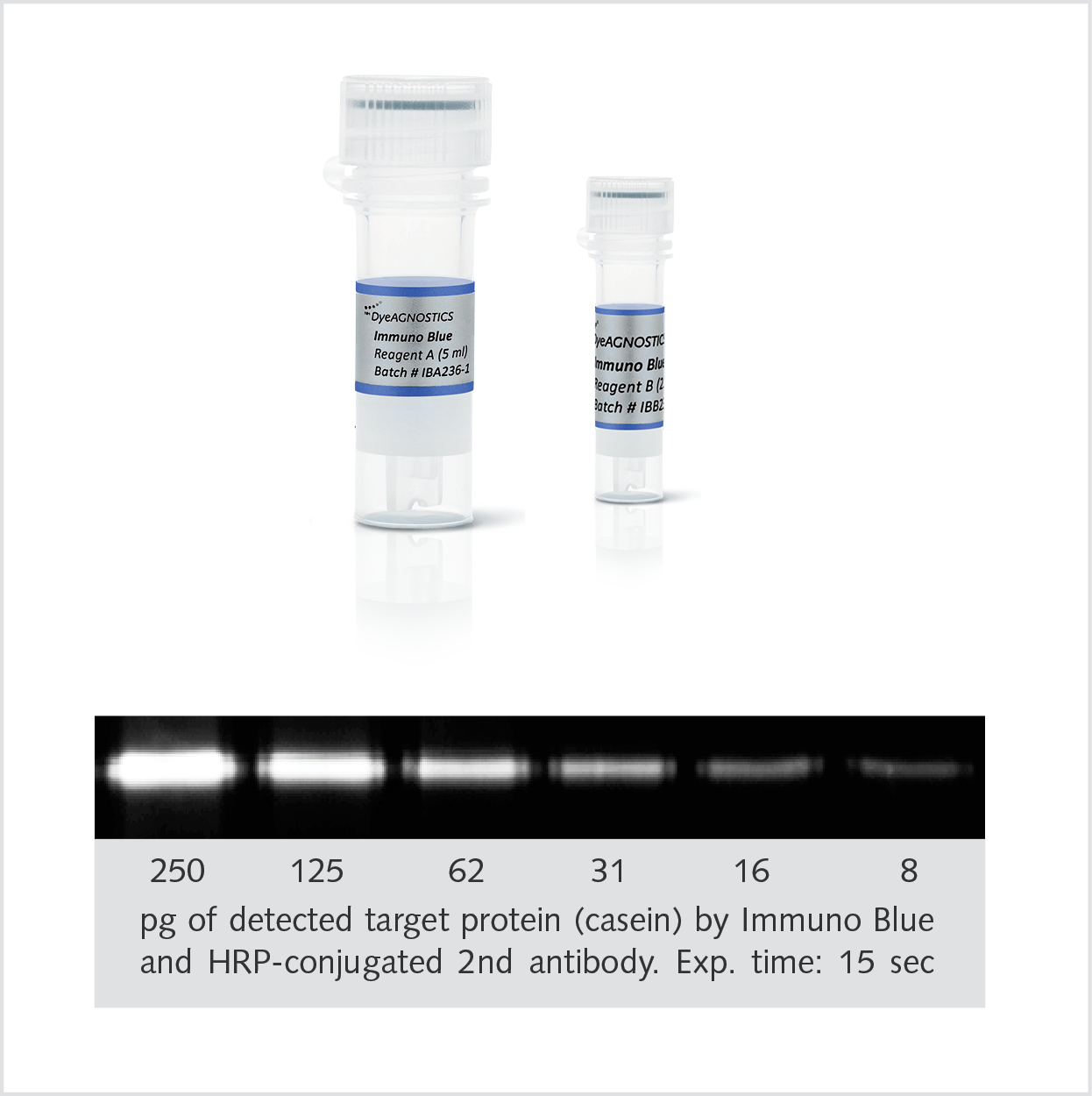 |
Immuno Blue HRP-SubstratDetektion des TargetsDas Immuno Blue HRP Fluorescence Substrate vereint die hohe Sensitivität der Chemilumineszenz mit der Signalstabilität und der kurzen Detektionszeit von fluoreszierenden Antikörpern. Hierbei wandeln HRP-konjugierte Antikörper das Immuno Blue Substrate in ein über Monate stabil fluoreszierendes Präzipitat um. |
||
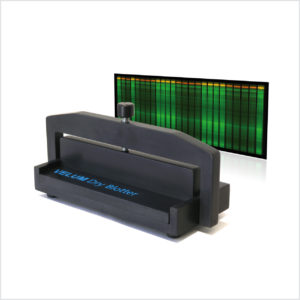 |
BlotterProtein TransferUnsere Blotterserie, der BEO Dry Blotter und der VELUM Dry Blotter, wurden für den Proteintransfer aus Foliengelen (z.B. EXCEL oder VELUM Gelen) entwickelt. Ihre einfache Bedienung ohne Puffer sowie die hohe Qualität der Blots (z.B. keine Luftblasen) machen diese einfachen Blotter aber auch zum beliebten Werkzeug für jede Art von Gel (Protein/ DNA / RNA).. Zur Produktseite |
||
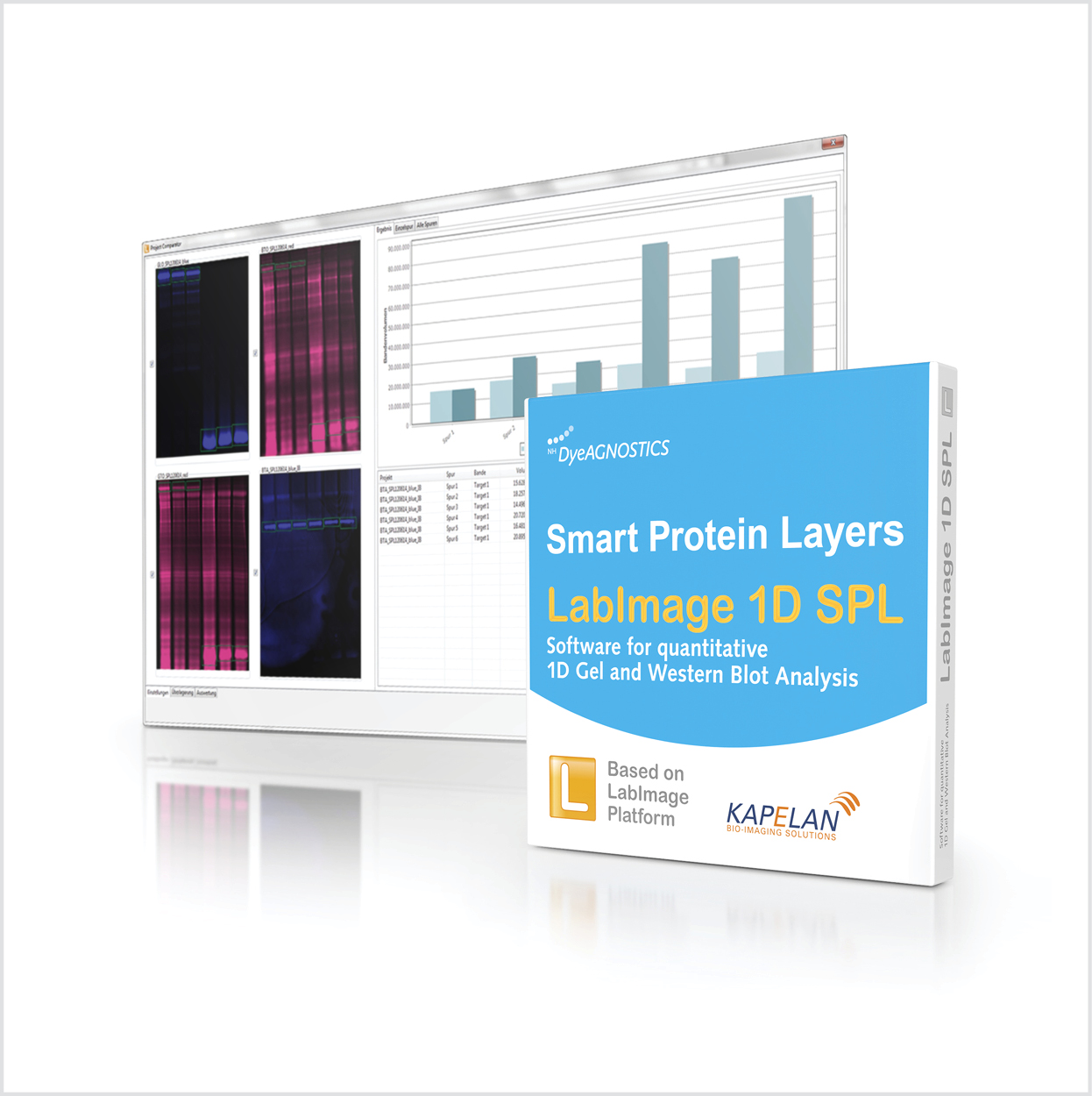 |
SPL LabImage 1D SoftwareSchnelle und präzise Auswertung von qWB AnalysenUm vertrauenswürdige quantitative Western Blots durchführen zu können, bedarf es der Normalisierung des detektierbaren Targets im Verhältnis zum Gesamtprotein auf dem Blot (natürlich zu diesem Zeitpunkt, da Proteine ja nicht kovalent an der Membran gebunden sind). Die SPL LabImage 1D Software berechnet mit einem Klick die Verhältnisse von Target und korrespondierendem Gesamtprotein pro Spur und über alle Spuren (Proben). |
||
.
Western Blot Analysis
Western blots are commonly used to detect specific protein expression in a sample such as cell extracts, tissue homogenates or liquids.
The extracted total protein of a sample (e.g. cell A and cell B see figure) is separated by gel electrophoresis, transfered (blotted) onto a special membrane and the protein of interest (target) is immunodetected by specific antibodies.
.
.
The Western Blot Workflow
The protein is extracted from a sample under denaturing conditions. (Usually) equal amounts of protein of the samples are separated by gel electrophoresis according to the molecular protein size (molecular weight). After the separation, the proteins are transferred to a specific membrane by electro- or capillary blotting. The transferred protein is kept on the membrane surface due to hydrophobic and electrostatic interactions (nitrocellulose membranes) and hydrophobic interactions (PVDF membranes). As the interaction of the proteins with the membranes surface is in a non-covalent manner, approximately 30-90 % of the proteins are washed down during the repeated washing and antibody incubation steps.
The protein of interest (target) is then immunodetected by a specific antibody. After several washing steps (to remove unbound antibody) approximately 40 second antibodies bind to the Fc region of the first antibody.
In order to detect the secondary antibodies, these proteins are either conjugated...
a) ... with a horse-radish peroxidase which converts a specific substrate under light emission (chemiluminescence, peak wavelength approx. 465 nm)
b) ... with a fluorophore which emits a specific fluorescence light upon adequate excitation.
.
.
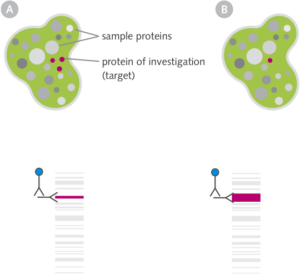
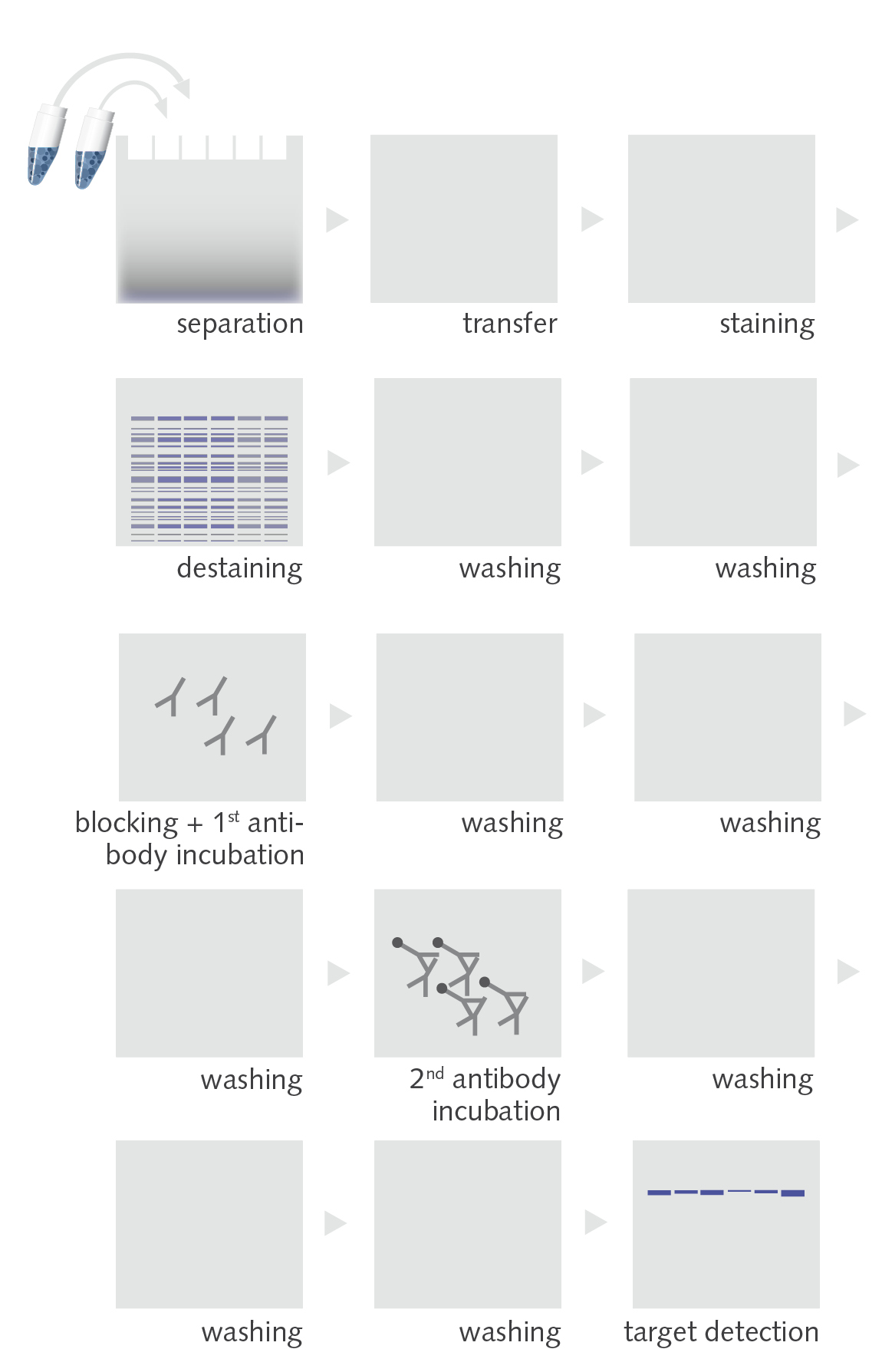
Loss of protein during Western Blot Analysis
Western Blot protein transfer and subsequent immunochemistry (e.g. washing steps with TBST) lead to inconsistent loss of total protein.
The ability and strength of binding of a protein to the membrane is given by its hydrophobicity (PVDF membranes) or charge + hydrophobicity (nitrocellulose membranes). In addition, abrasion of protein occurs also by mechanical forces (e.g. table shaker).
Typical losses of proteins are between 10% to 80%. This effect can be sensitively monitored only by pre-labeling the total protein with fluorophores.
Figures below show sample protein (E. coli, 20 µg per lane) visualized by using Smart Labels during Western Blot analysis. The membrane imaging was performed using an Octoplus QPLEX imager.
.


